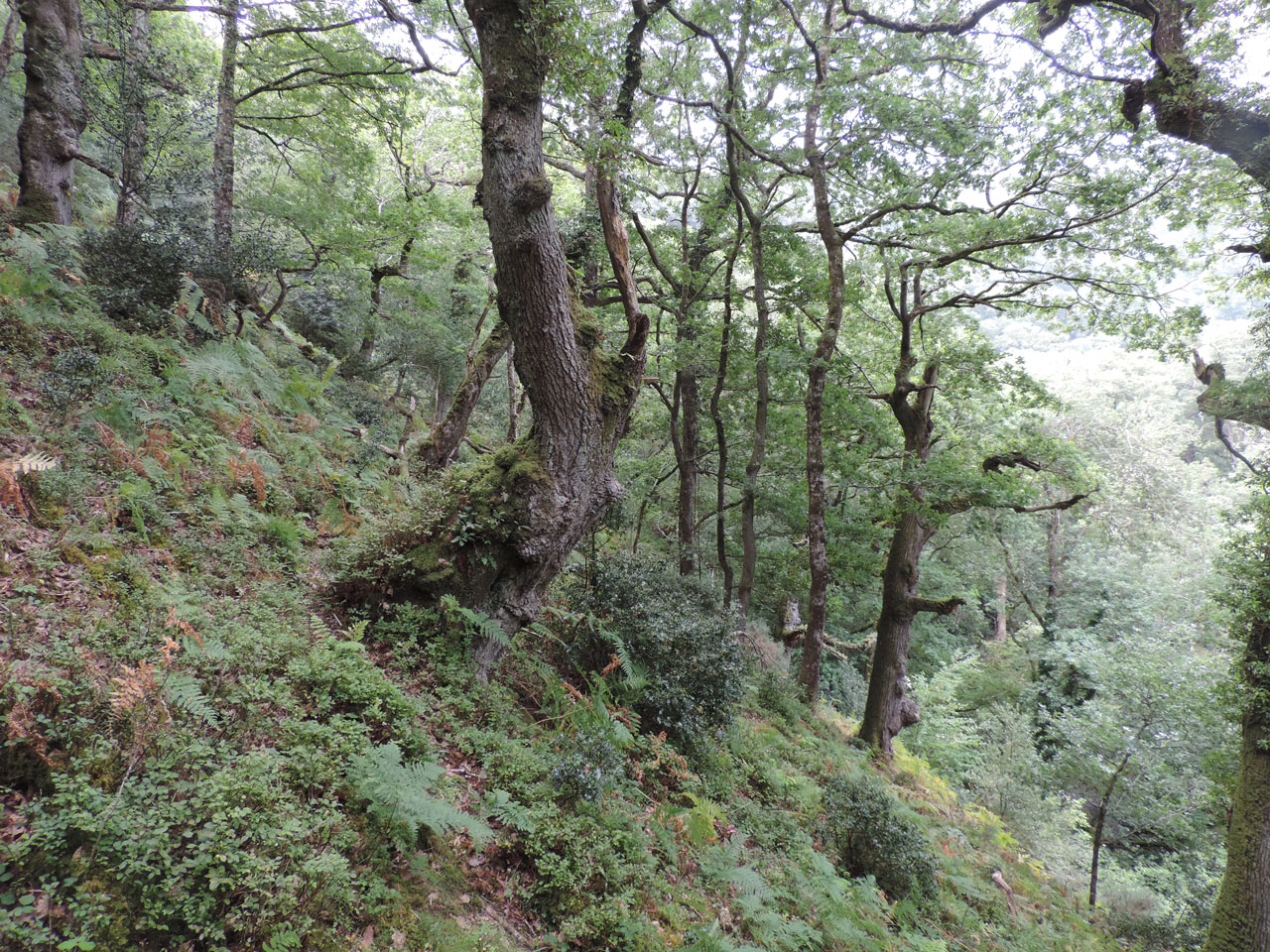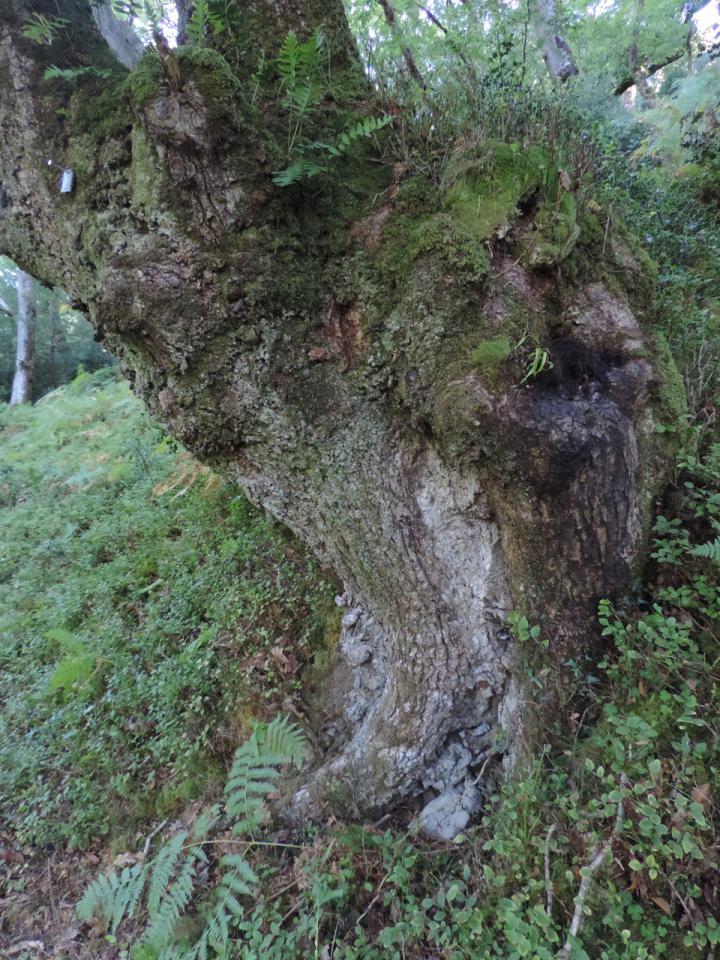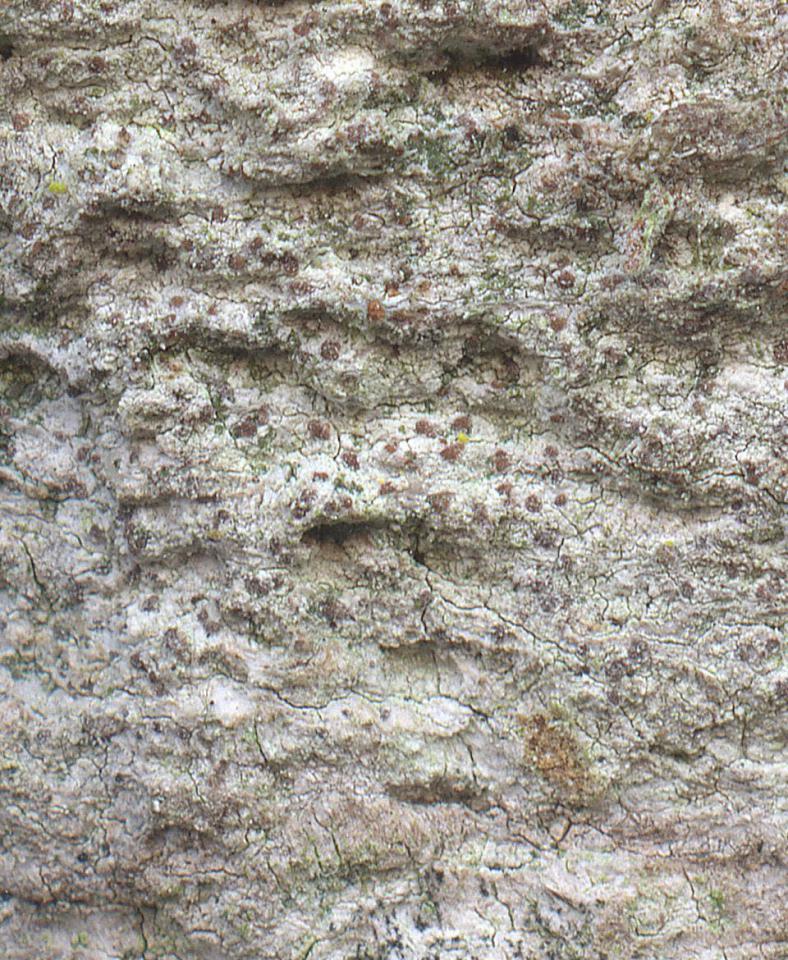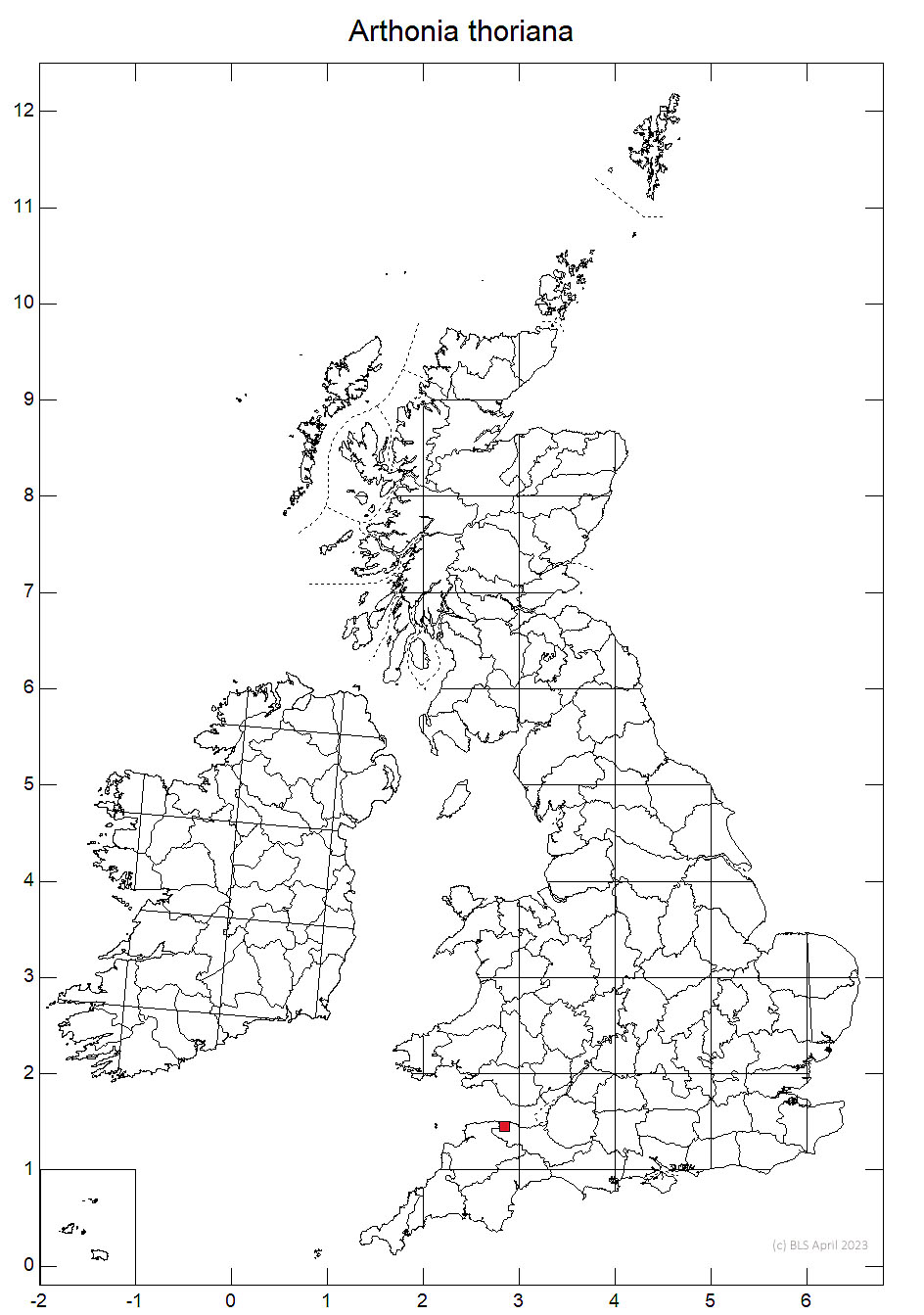Arthonia thoriana
A non-lichenised fungus with a white thalli and small pallid brown apothecia at least partly covered by a thin layer of white pruina. It is found deep in crevices of ancient Oaks in old growth pasture woodland. To date only recorded from a single site in south west England and endemic.
Not easy to spot as it occurs deep in bark crevices and the apothecia can be very pale. This fungus has a thick, white, cracked, non-lichenised thallus, with small 0·12–0·30 mm diam pallid brown emarginate apothecia variably covered of thin layer of white purina. Spores (1–2–) 3-septate, (8–) 9–12 × 3–3·5 (–4) μm.
The species is confined to dry bark on the undersides of leaning old Oak trees, both maidens and pollards, in open old growth pasture woodlands. Associated species include Chaenotheca trichialis, Chrysothrix candelaris, Inoderma subabietinum, Dendrographa decolorans, Alyxoria xerica and Cresponea premnea.

As yet only known from Horner Combe, Exmoor, Devon.
Recently discovered, and could occur in other old growth woodland in at least the south west, but so far only known from a single well managed National Nature Reserve. When discovered, some of the Oaks supporting A. thoriana, were threatened by increasing shade from young Holly. Subsequently a programme of Holly cutting was initiated to prevent deep shade developing around lichen rich trees, including those with A. thoriana. Endemic but Red List status not yet assessed.
Cannon, P., Ertz, D., Frisch, A., Aptroot, A., Chambers, S., Coppins, B. J., Sanderson, N. A., Simkin, J. & Wolseley, P. (2020) Arthoniales: Arthoniaceae, including the genera Arthonia, Arthothelium, Briancoppinsia,Bryostigma, Coniocarpon, Diarthonis, Inoderma, Naevia, Pachnolepia, Reichlingia, Snippocia, Sporodophoron, Synarthonia and Tylophoron. Revisions of British and Irish Lichens 1: 1 - 48
Ertz, D., Sanderson, Łubek, A. & Kukwa, M. (2018) Two new species of Arthoniaceae from old-growth European forests, Arthonia thoriana and Inoderma sorediatum, and a new genus for Schismatomma niveum. The Lichenologist 50:161-172 link



